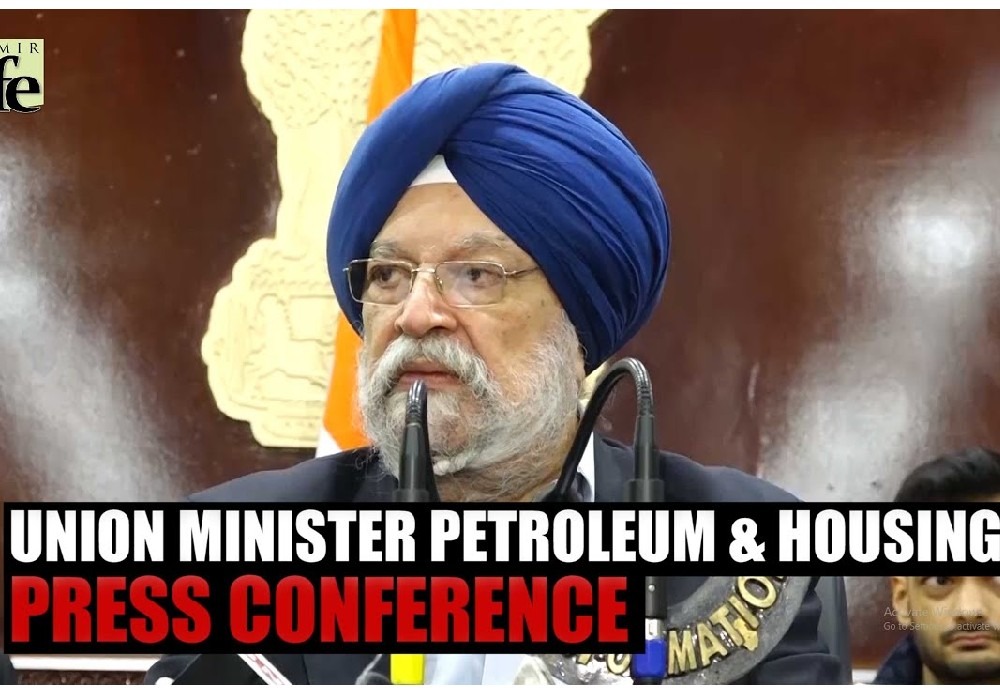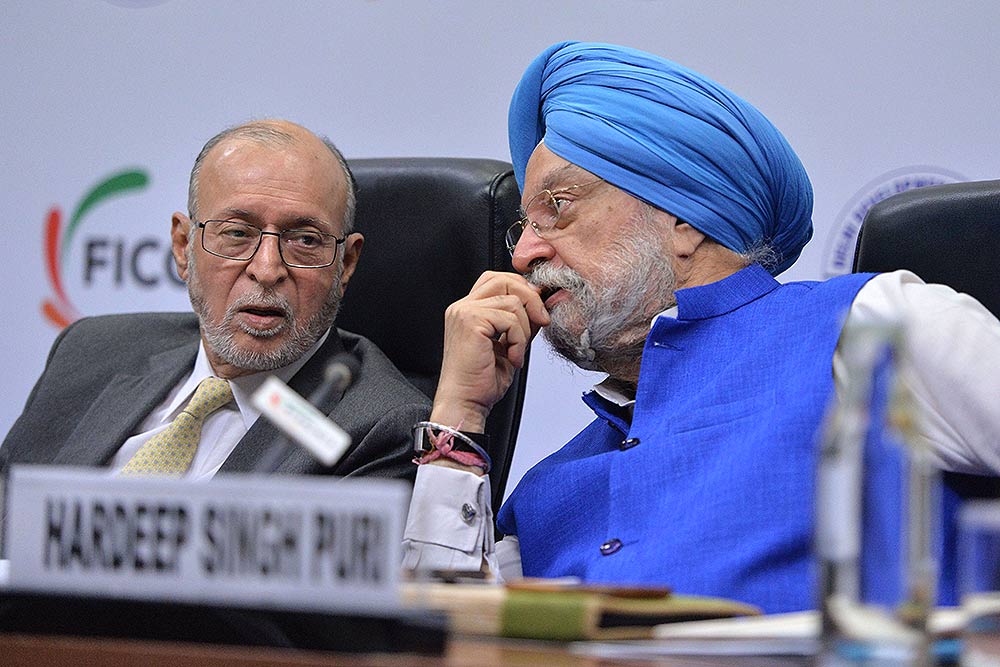It will be the first in-person meeting between the two leaders after their talks on the side-lines of the BRICS summit in Brasilia in November 2019.
Prime Minister Narendra Modi met Russian President Vladimir Putin 19 times since 2014. It clearly demonstrates that Russia’s proximity to India is inherently solid despite the turmoil in the geopolitics. Putin participated in the Modi-chaired conference on maritime security of the UN Security Council, under India’s presidency. The upcoming summit would be their 20th meeting.
Russian president minces no word, letting world know the place India has in the emerging order. This is impressive despite the evolving concepts of Indo-pacific and its workable mechanism-- The Quadrilateral (QUAD). For the fact that Russia has openly criticised the ensemble of QUAD as the destabilizing force in the region. While the Quad is definitely growing as there are obvious concern over the breakdown of international laws that govern and bind global trade in the sea and on the land.
Russian President Vladimir Putin called New Delhi one of the authoritative centres of the multipolar world whose foreign policy philosophy and priorities are close to Moscow. “I am convinced that, relying on strong traditions of friendship and mutual understanding, we will jointly continue to further develop Russia-India ties, he said
He added: “Next week, I will visit India. During talks with Prime Minister Modi, we will outline new large-scale initiatives for the further development of the specially privileged Russian-Indian relationship, the Russian-Indian strategic partnership.”
But what is the most important factor in the bilateral ties is certainly not the defence as against the widely perceived notion that analysts still keep harping on. That is the relics of the past and some to extent it continues with the delivery of next generation military equipment like S-400 triumf and Indo Russian joint collaboration and subsequent production of assault rifle AK 203 for the Indian Armed Forces. But the message is clear that India’s relation with Russia is actually unfolding in sectors like Energy in such a scale that it becomes the defining moment of the relationship.
As President makes it: “Bilateral trade shows good dynamics; ties are actively developing in the energy sector, innovation, space, and the production of coronavirus vaccines and medicines. There is extensive cooperation in the defence sector, including through the creation of joint ventures.”
It is already laid down in key international forum like ASEAN in the 10th ASEAN Economic Ministers-Russia Consultations in September. Russia and ASEAN expressed their collective desire enhance and broaden the scope of their cooperation in the economic sphere. This also led to the adoption of a revised ASEAN-Russia Trade and Investment Cooperation Work Program for the period encompassing 2021-2025.
Defence and security with Russia
Russia is still at the core of Indian defence architecture. It is the top arms supplier in Southeast Asia with total sales of $6.6 billion in the years spanning from 2010 to 2017. Indian military still thrives on Russian built military hardware which is about 70 percent of the total equipment. Besides such massive swathe of Russian –origin equipment need the constant support for operating and maintaining such equipment. Moreover, with both countries looking into enhancing the level of joint defense production, this can fuel the reach of their sales amid emerging competition in the region. Furthermore, the Chennai-Vladivostok Maritime Corridor adds a crucial dimension to Southeast Asian affairs, and signals how both countries converge in deepening relations in the region.
In October 2018, India had signed a USD 5 billion deal with Russia to buy five units of the S-400 air defence missile systems, despite a warning from the US government that it could attract sanction like Countering America's Adversaries Through Sanctions Act” (Public Law 115-44) (CAATSA), which imposes new sanctions on Iran, Russia, and North Korea. The US has already imposed sanctions on Turkey under the CAATSA for the purchase of a batch of S-400 missile defence systems from Russia.
Russia has begun the delivery of S-400 Triumf surface-to-air missile systems to India, according to a senior Russian official. The development comes as both sides prepare for a visit to India by Russian President Vladimir Putin on December 6 for a bilateral summit with Prime Minister Narendra Modi.
US government has not yet clarified whether it will impose sanctions on India under the provisions of the Countering America's Adversaries Through Sanctions Act (CAATSA) for procuring the S-400 missile systems. But it seems unlikely even as the leading military analysts in US have advised against such act while at the same time US-India defence trade has been growing at all time time.
Another important dimension of India-Russia defence partnerships is the AK-203 assault rifles, which is set for the final go-ahead during Putin’s visit. During this high-profile visit, India and Russia are scheduled to ink the deal on supplying 7.5 lakh AK-203 assault rifles. According to the Government sources, all necessary clearances have been done for the final approval from the Cabinet Committee on Security. Though the Project is delayed on the account of cost which includes the transfer of technology and price on each rifle produced jointly in India. Ministry of Defence gave its final clearance to over Rs 5,000 crore deal with Russia to manufacture 7.5 lakh AK-203 assault rifles in Uttar Pradesh's Amethi. Of the 7.5 lakh rifles to be acquired by the Indian Army, the first 70,000 will include Russian made components as the transfer of technology happens slowly.
Expanding bilateral Energy Cooperation
The unsung story of indo-Russia bilateral relation lies in the energy pact. The scale of investment is unprecedented. According to the Indian oil minister Hardeep Singh Puri, Indian oil companies have already invested about $16 billion in the Russian oil and gas sector, and Russia invested the same amount in India.
Such is the growing energy pact that recently, Russia’s Vostok Oil megaproject, which links some of Rosneft’s vast resources with the Northern Sea Route opened the doors for future possibilities for India. A win-win situation for India and Russia, it is marked as a development priority and the supply chain prospects for the European and Asian markets.
Recently, Russian conglomerate Rosneft CEO Igor Sechin highlighted the further scope of such ongoing joint projects, such as Sakhalin 1, Taas Yuryakh and Vankor, as well as further cooperation in the area of oil and gas production, refining, petrochemicals, and sales of hydrocarbons.
"Mutual investments into projects with the engagement of Rosneft and the Indian partners exceed $17 billion. This accounts for more than half of cumulative Russia-Indian investments to date," Sechin said on the possibilities of further expanding the investment.
Indian partners are interested in joining the cluster, which contains combined estimated resources of over 6 billion mt, or around 44 billion barrels, of premium crude. India’s ONGC Videsh Ltd, an overseas arm of ONGS is discussing buying a stake in Russia's massive Vostok oil project as well as a planned liquefied gas project Arctic LNG-2. The Vostok Oil in the far northern Taymyr Peninsula is one of the biggest oil production projects in the world and as estimated it has a resource base of more than 6 billion tons of oil. According the estimates by global experts, oil production at the cluster could reach around 2.3 million b/d by 2033.
This sums the essence of India Russia bilateral relations. In fact this is not the underlying message about the economic aspect of the bilateral relations. A closer look will make one realize the strength of India- Russia bilateral relations is unfolding in many ways beyond defence. The pact on energy security is on the top of the list. Ultimately, that is the need of the hour for India in its quest for the emerging economy and the energy security is at heart of it.

Synopsis Union Minister Hardeep Singh Puri stated India's commitment to an inclusive global energy future through open collaboration, highlighting the India-Middle ..

देश में एक करोड़ यात्री प्रतिदिन कर रहे हैं मेट्रो की सवारी: पुरी ..

Union Minister for Petroleum and Natural Gas and Housing and Urban Affairs, Hardeep Singh Puri addressing a press conference in ..

Joint Press Conference by Shri Hardeep Singh Puri & Dr Sudhanshu Trivedi at BJP HQ| LIVE | ISM MEDIA ..
(3).jpg)
"I wish a speedy recovery to former Prime Minister Dr Manmohan Singh Ji. God grant him good health," Puri wrote. ..